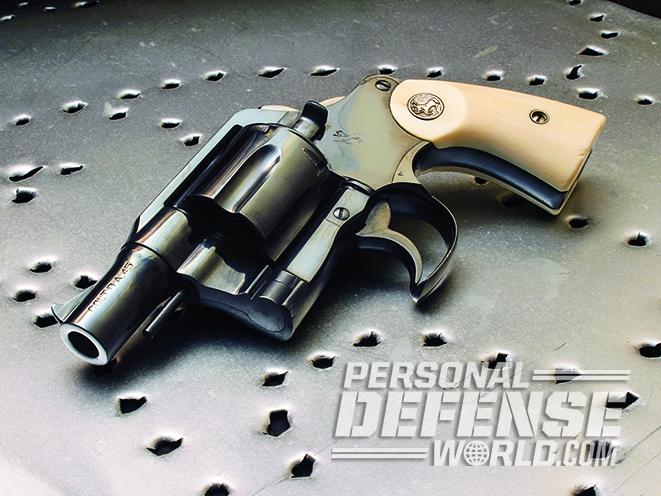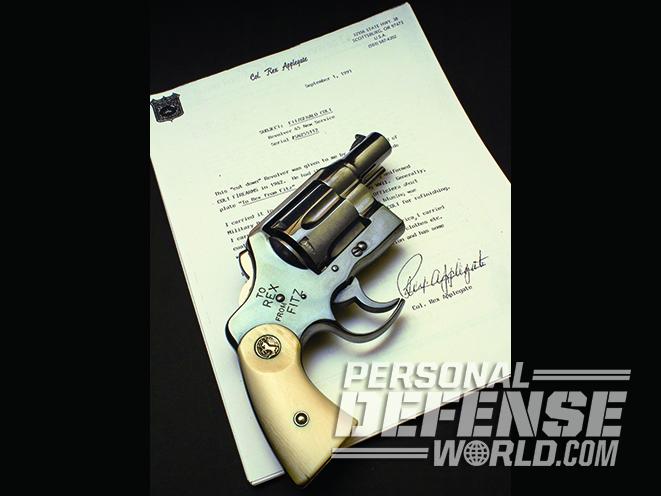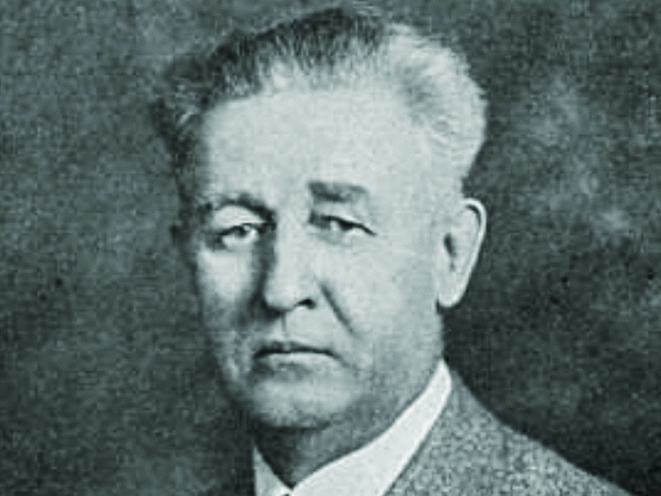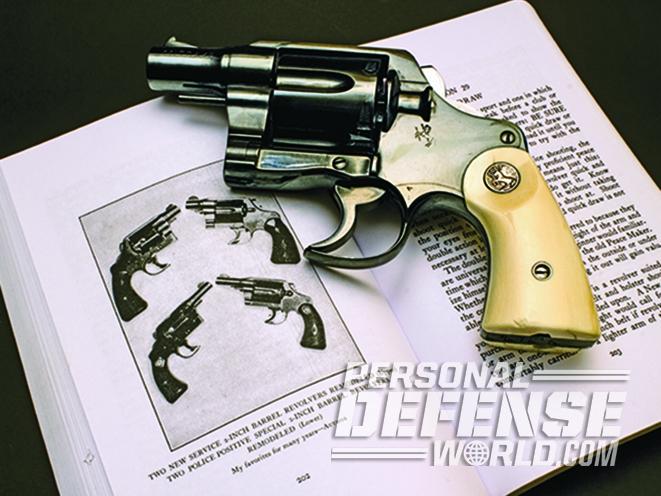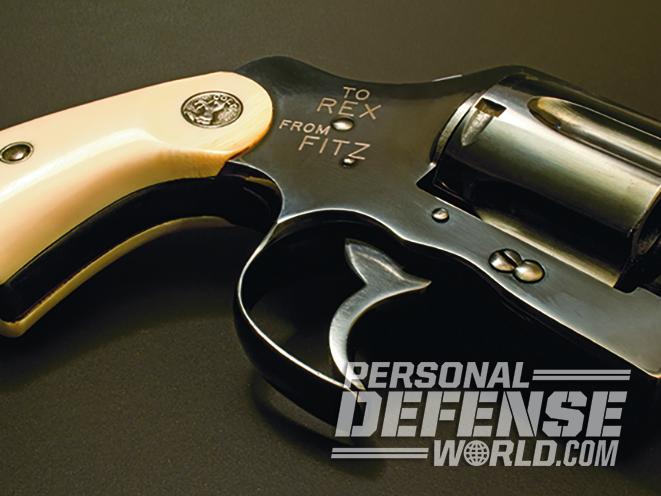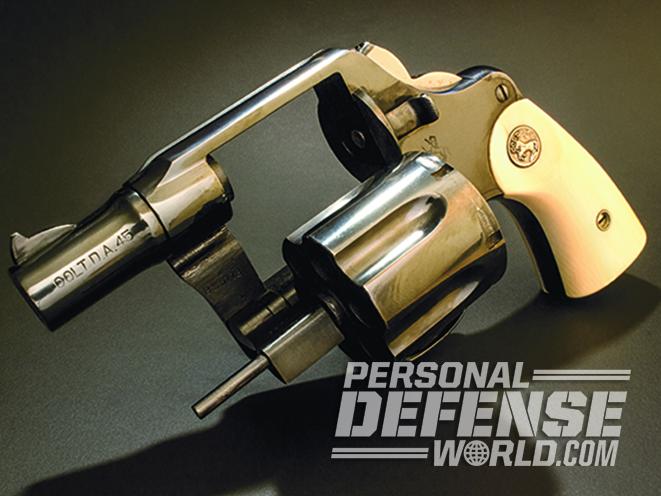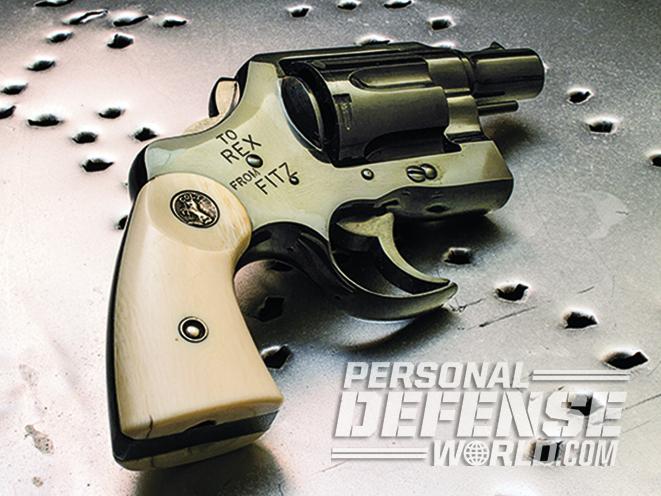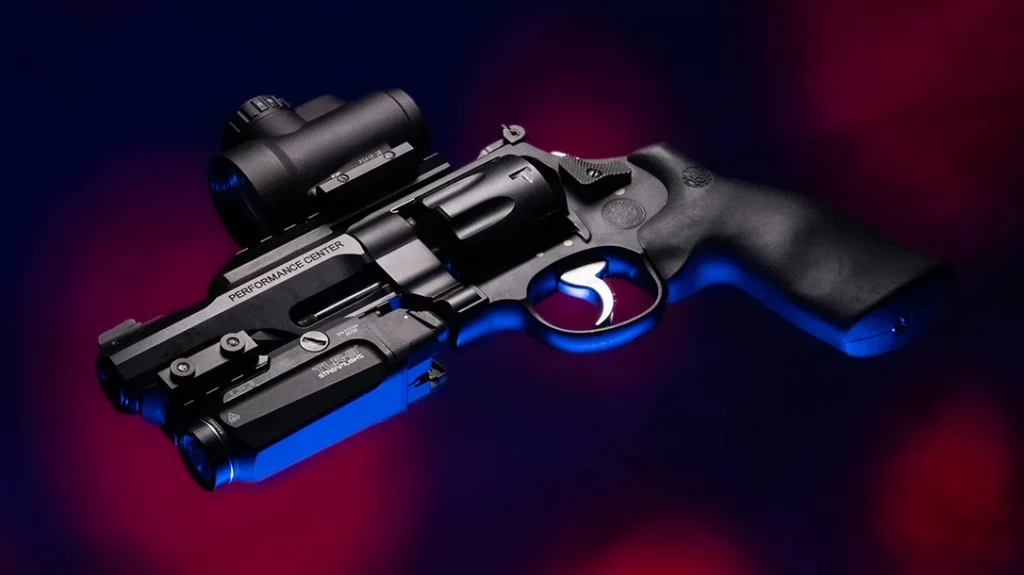What do you get when you combine the talents of one of the most extraordinary shooters of the 20th century with one of the legends of modern close combat? You get an incredibly unique and rare pocket pistol: the late Colonel Rex Applegate‘s “Fitz Special.”
The “Fitz” in the term “Fitz Special” comes from John Henry FitzGerald. Born in 1876 in Manchester, New Hampshire, FitzGerald made his living in his early years as a professional bare-knuckle fighter. He also developed a keen interest in guns and shooting, and by World War I he had left the ring to work for the Iver Johnson Sporting Goods Store in Boston. By that time he was an expert marksman—a skill that helped him secure a position with Colt in 1918. Initially, FitzGerald worked in Colt’s Arms Testing Department, but later specialized in public relations and training. For more than 25 years, he traveled the country for Colt, representing and demonstrating its guns at shooting matches and providing specialized training in his distinctive approach to shooting to many law enforcement agencies.
Custom Wheelguns
Advertisement — Continue Reading Below

Although FitzGerald made many contributions to the shooting world, he is probably best known for his unique method of modifying revolvers for defensive and combative use. Starting with stock Colt revolvers, specifically .38 Police Positive Specials and .45 New Service models, FitzGerald personally modified them by shortening the barrel to 2 inches, shortening the ejector rod, installing a lower front sight, bobbing the hammer, shortening and rounding the butt, de-horning the entire gun and removing the forward portion of the triggerguard to allow quicker access. Known appropriately as “Fitz Specials,” these unique guns were also graced with Fitz’s custom trigger jobs.
- RELATED STORY: 13 Iconic Combat Handguns Throughout History
In his seminal work, Shooting, published in 1930, FitzGerald explains in detail the reasoning for these modifications: “The triggerguard is cut away to allow more finger room and for use when gloves are worn…The hammer spur is cut away to allow drawing from the pocket or from under the coat without snagging or catching in the cloth and eliminates the use of thumb over hammer when drawing. The ejector rod end and part of the ejector rod is cut away to prevent the rod end from catching or wearing through cloth in pocket…”
Clearly, Fitzgerald was intimately familiar with the qualities of a good pocket pistol and tailored his modifications of Colt revolvers with this specific application in mind.
Advertisement — Continue Reading Below
Pocket Power

Colonel Rex Applegate’s extraordinary sidearm began its life as a Colt .45 New Service revolver. FitzGerald then modified the stock gun to shorten the barrel, shortened the ejector rod, shortened and rounded the butt of the grip and removed the front of the triggerguard. Since shortening the barrel and grip removed the weapon’s serial number, the number was re-stamped on the inside of the cylinder crane.
In true FitzGerald fashion, he also bobbed the revolver’s hammer to make it easier to draw the gun from a pocket; however, he left the top of the hammer smooth. Some Fitz Specials featured a checkered surface on the top of the hammer that allowed them to be fired in single action by squeezing the trigger partway and then cocking the hammer with the thumb. Col. Rex Applegate’s Fitz Special, however, was intended purely for double-action combat work, so its hammer was left smooth.
Advertisement — Continue Reading Below
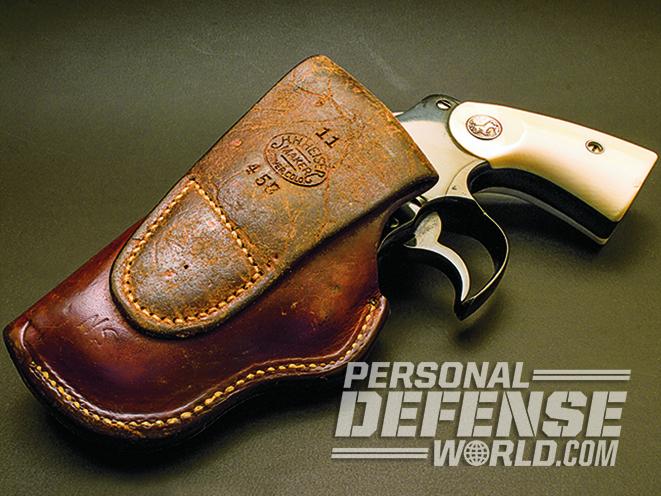
The grips on the Applegate Fitz are genuine ivory and are inlaid with the iconic Colt symbol. The most distinctive feature of the revolver, which leaves absolutely no doubt as to the personalities responsible for its character, is the engraving on the reverse side of the gun that reads “To Rex from Fitz.”
Although Col. Applegate makes reference to having carried the gun in both a belt holster and a shoulder holster, only a belt holster survived with it. Not surprisingly, it also has a rich history. Its stamped marking “H.H. Heiser, Maker, Denver, Colo.” indicates that it was made by the Hermann H. Heiser Saddlery Company, a company founded by master leather craftsman Hermann Heiser. After immigrating to the U.S. in 1854, Heiser founded a business making custom saddles and leatherwork in Wisconsin. In 1863, he moved to Colorado and established business there, specializing in custom-crafted saddles and gun leather. Heiser’s superior work and business savvy earned him worldwide recognition. After he passed away in 1904, his sons continued to run the family business, and Heiser holsters remained highly prized accessories among shooters of the first half of the 20th century.
Into Legend
Advertisement — Continue Reading Below
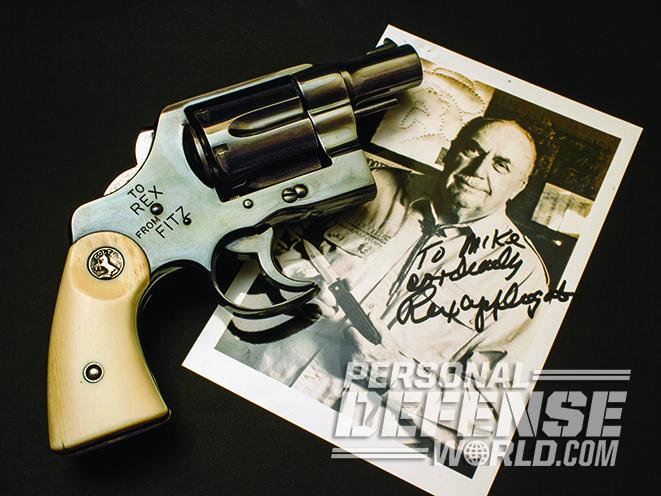
On July 14, 1998, the world lost one of its greatest warriors and close-combat trainers. After Col. Applegate passed away, his wife, Carole, asked Peder Lund, the founder and president of Paladin Press and a longtime friend of the Colonel, to help her auction off Col. Applegate’s extensive gun collection. In addition to assisting with that daunting task, Lund was also allowed first choice of any of the guns in the collection that were not reserved for surviving family members.
A man of discriminating taste with a keen sense of history, Lund chose the Applegate Fitz Special and an equally famous Applegate sidearm—the .38-caliber Smith & Wesson “Lemon Squeezer” revolver that the Colonel regularly carried while he was living in Mexico.
- RELATED STORY: The Colt Model 1911 – A Look Back At 105 Years Of Excellence
Lund kept these guns in his private collection for a number of years. Then, in 2003, he told me he was planning to sell them. As Paladin’s video production manager, I had the privilege of working closely with Col. Applegate during the latter years of his life and benefitted greatly from his mentorship. In addition to shooting, editing and producing videos on his combat-proven method of handgun point shooting, I was honored to co-author a book with him on that topic titled Bullseyes Don’t Shoot Back.
Advertisement — Continue Reading Below
Although I was intrigued by the opportunity to purchase the Colonel’s two most iconic carry guns, I wasn’t sure my budget would allow it. Lund also had great difficulty establishing appropriate prices for them. After several months passed without striking a deal, Lund walked into my office and handed me a plastic grocery bag. Puzzled, I looked inside and found the Colonel’s Fitz and his .38. I reminded Lund that we still hadn’t set a price and that I wasn’t comfortable accepting the guns until we had struck a fair deal. He explained that he had given the guns and my contributions to the Colonel’s legacy a lot of thought and decided that nobody was better qualified to own them than me. Needless to say, I was incredibly moved and honored by his words and his generosity.
Col. Applegate’s Fitz Special is truly a one-of-a-kind firearm with deep historical significance. It and my personal memories of the man who carried it are among my most prized possessions.
This article was originally published in ‘Complete Book of Revolvers’ #189. For information on how to subscribe, please email subscriptions@
Advertisement — Continue Reading Below
